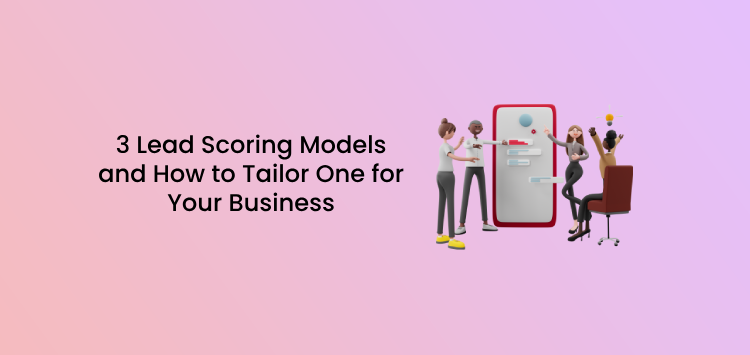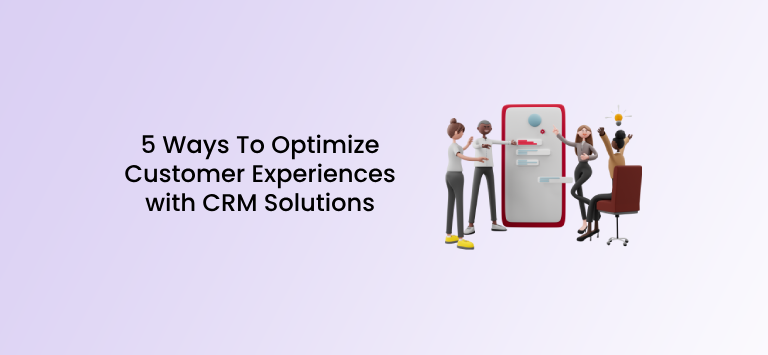It’s difficult to form solid customer relationships when dealing with so many prospects. You want to show leads special interest, making them feel valued. However, you also want to ensure the customers you are building relationships with are actually going to go ahead and make a purchase.
That’s where a lead scoring model comes in, as it allows you to track the customer’s buying journey from discovery to purchase, assigning points as they make their way down the sales funnel. This means you can focus your time on leads who look most likely to purchase from the business.
So, how can lead scoring models help your business, and how can you create a tailored version that suits the needs of your organization? Read on to find out more.
What Are Lead Scoring Models?
Lead scoring is when you rank business leads based on their attributes and data points to evaluate a customer’s readiness to buy.
In short, you’re seeing where in the buying journey your customer stands. It’s useful to use a scale when measuring this, as it can help to see which leads are the most ripe for the taking, and therefore give you a better chance of increasing conversion.
There are several criteria that most scoring models are based on, including:
- Intent data – What is the customer’s intention to buy?
- Prospect behavioral data – What have their buying habits been like so far?
- Firmographic data – Who are your customers?
- Engagement – How often does the lead engage with the business?

Image sourced from support.pathfactory.com
A lead scoring system allows you to measure leads, attributing points to potential customers. When a customer ticks more of your boxes, they then become a qualified lead. This can mean they’re ready to make a purchase with your business. So, it’s important to target those higher-up on the scale first.
Why Are Lead Scoring Models Important?
Lead scoring models are beneficial to businesses and prospects alike. For organizations, it can be a great way to track customer’s habits and give you a better idea of when it is a good time to push for a sale, and when you need to let the customer cool off. Here’s a look at some of other the ways lead scoring models are important:
They Give You Time to Nurture Leads
By using a lead scoring model you are encouraging the sales team to build better relationships with prospects at each stage of the life cycle. It also allows you to know how to approach customers and develop leads.
If they are new to your brand, you may wish to start with a simple introduction. If they are towards the end of the buying journey, you can nurture them further down the sales funnel.

Image sourced from meritto.com
They Let You Find Qualified Leads
Every prospective customer is important to the business. However, you don’t want to be wasting your time on browsing customers who are unlikely to make a purchase. The leads scoring system means you can assess how likely a customer is to go through with a sale. That way, you can ensure your efforts are concentrated in the right place.
They Help You Improve Campaign Strategies
You can plan more effective campaign strategies when you introduce lead scoring models. It may be that you have specific campaigns for each stage of the buying process depending on the score of the lead.
For instance, if they score highly and you feel as though they will be making a purchase, you can implement a specific marketing strategy to help them get over the line, such as offering an extra 10% off.
What Makes a Good Lead Scoring Model?
There are a few elements that contribute to a good scoring model. To start, it’s important to define the steps leads take before they become loyal customers. This can look something like:
- Discovering
- Engaging
- Exploring
- Acquisition
A good lead scoring model should focus on the above, identifying what necessary actions need to be taken at each stage. You also need to figure out the amount of points you will assign to each action for the lead-scoring workflow.
You’ll also need to be perceptive when it comes to new customers. How did they find out about your organization? What have their behavioral patterns demonstrated so far? Delving into who your customers are will give you the chance to guide them better down the sales funnel – and accumulate more lead-scoring points for them as they progress.
Another good attribute of a good lead scoring model is to have a plan in place regarding how you will contact prospects. When they reach enough points to become a potentially valuable lead, consider how you will approach them.

Image sourced from leadfuze.com
3 Lead Scoring Models
- Website Activity
Tracking visitor activity on your website can be a great lead-scoring model. When trying to identify sales leads from visitors who click onto your site, check out the pages they view and how much time they spend there.
If they’re interested in your products you’ll find their bounce rate is low, and they may click onto several parts of your website. You can then give each action a number i.e. browsing a web page for more than 5 minutes = 10 points. Adding an item into the cart and abandoning the cart could be 20 points because you know they have shown a strong interest in the product, and are almost prepared to make that purchase. This is when you can re-target those leads who have previously abandoned the cart.
- Suitability
Another lead scoring model is suitability and activity. You can rank leads on how suitable they are in comparison to typical demographics. You can employ a system that measures how customers interact with the website against the demographic attribute of the lead.
If a lead has a profile of someone that is likely to make a purchase, you can assign them higher points than a fresh lead who does not fit the typical buyer profile.
- Email Engagement
Email marketing is still a very popular way to contact customers. You can use it to track a lead’s interaction with your business. For instance, if they never open your emails, you may wish to discard them from your system entirely. If they do open your emails, you may give them a score of 5. If they often click on your links within the email, this may be a 20.
How to Tailor a Lead Scoring Model for Your Business
- Connect the Sales and Marketing Teams
Your sales team and marketing team likely work together on many projects within the company. Creating a good lead scoring model needs to be a combined effort from the marketing and sales teams as each side will have valuable input.
The marketing team will have a good understanding of what customers want, and what they are interacting with at the moment. They will also know which marketing materials draw customers in and generate a good return. Plus, they have data science for business insights which tell them all about customer behavior and interactions.
This goes hand-in-hand with the sales team, who can then take over once they believe that a customer is a valuable enough lead with a solid lead score.
- Look at Customer Demographics
Generate a list of typical demographics in your customer base. The demographic with the best conversion rate will then be assigned the most lead scoring points.
This lets you filter out prospects that aren’t necessarily within your usual buyer demographic, and ones you would be unsure of as to whether they would make a purchase. This means that you’re less likely to waste time on customers who are simply browsing and would probably not complete the sale.

Image sourced from techslang.com
- Action-Based Scoring System
Now you have filtered down your target audience, you can now look at what actions are important to you. What does a customer need to do to earn a top lead scoring spot?
This system can start with something simple such as interacting on social media, all the way up to contacting your hosted business phone systems to talk to your team about a specific product. You need to assign such actions with points, so you can figure out which customers are genuinely interested in your products/services.
- Subtract Points
Don’t be afraid to take lead scoring points away from a prospect. For instance, if they started off being a hot lead but then died down into a cold lead, subtract a point. You may then add another on if they start showing more interest. Assigning negative points allows you to focus on more quality leads.
- Ready to Convert
Assigning points to each action is an important part of the lead scoring model. It’s also crucial to know when enough points is enough. At what stage are you going to move your lead into the sales-ready phase of the sales pipeline?
You can use tools to help you keep track of leads and some software can even notify you when the lead has reached your lead scoring threshold. You’ll then know that you’re ready to contact them and gently guide them into making a purchase with your business.
If the lead is busy and unable to take the call, leave your number, and they can get back into contact with you. It’s a good idea to consider various telephone systems for your business, as this will make it much easier for customers to get in contact with your business and reduce the chance of missed sales.

Image sourced from acquire.io
Lead Scoring: The Next Steps
Lead scoring models are unique to each business, as each business knows what customer actions are most important to them. When creating your lead scoring system, it’s important to listen to the voices of your sales and marketing teams to create the most effective system you can.
Assign points based on what you deem to be important, and don’t be afraid to take points away if a lead is turning cold. After all, you need to focus on prospects that are going to turn into loyal, repeat customers.









